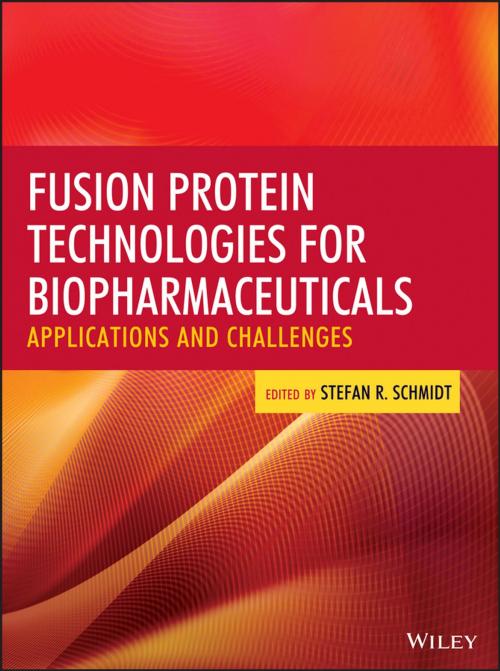Fusion Protein Technologies for Biopharmaceuticals
Applications and Challenges
Nonfiction, Health & Well Being, Medical, Medical Science, Biotechnology, Science & Nature, Science, Other Sciences, Molecular Biology, Pharmacology| Author: | ISBN: | 9781118354582 | |
| Publisher: | Wiley | Publication: | January 28, 2013 |
| Imprint: | Wiley | Language: | English |
| Author: | |
| ISBN: | 9781118354582 |
| Publisher: | Wiley |
| Publication: | January 28, 2013 |
| Imprint: | Wiley |
| Language: | English |
The state of the art in biopharmaceutical FUSION PROTEIN DESIGN
Fusion proteins belong to the most lucrative biotech drugs—with Enbrel® being one of the best-selling biologics worldwide. Enbrel® represents a milestone of modern therapies just as Humulin®, the first therapeutic recombinant protein for human use, approved by the FDA in 1982 and Orthoclone® the first monoclonal antibody reaching the market in 1986. These first generation molecules were soon followed by a plethora of recombinant copies of natural human proteins, and in 1998, the first de novo designed fusion protein was launched.
Fusion Protein Technologies for Biopharmaceuticals examines the state of the art in developing fusion proteins for biopharmaceuticals, shedding light on the immense potential inherent in fusion protein design and functionality. A wide pantheon of international scientists and researchers deliver a comprehensive and complete overview of therapeutic fusion proteins, combining the success stories of marketed drugs with the dynamic preclinical and clinical research into novel drugs designed for as yet unmet medical needs.
The book covers the major types of fusion proteins—receptor-traps, immunotoxins, Fc-fusions and peptibodies—while also detailing the approaches for developing, delivering, and improving the stability of fusion proteins. The main body of the book contains three large sections that address issues key to this specialty: strategies for extending the plasma half life, the design of toxic proteins, and utilizing fusion proteins for ultra specific targeting. The book concludes with novel concepts in this field, including examples of highly relevant multifunctional antibodies.
Detailing the innovative science, commercial realities, and brilliant potential of fusion protein therapeutics, Fusion Protein Technologies for Biopharmaceuticals is a must for pharmaceutical scientists, biochemists, medicinal chemists, molecular biologists, pharmacologists, and genetic engineers interested in determining the shape of innovation in the world of biopharmaceuticals.
The state of the art in biopharmaceutical FUSION PROTEIN DESIGN
Fusion proteins belong to the most lucrative biotech drugs—with Enbrel® being one of the best-selling biologics worldwide. Enbrel® represents a milestone of modern therapies just as Humulin®, the first therapeutic recombinant protein for human use, approved by the FDA in 1982 and Orthoclone® the first monoclonal antibody reaching the market in 1986. These first generation molecules were soon followed by a plethora of recombinant copies of natural human proteins, and in 1998, the first de novo designed fusion protein was launched.
Fusion Protein Technologies for Biopharmaceuticals examines the state of the art in developing fusion proteins for biopharmaceuticals, shedding light on the immense potential inherent in fusion protein design and functionality. A wide pantheon of international scientists and researchers deliver a comprehensive and complete overview of therapeutic fusion proteins, combining the success stories of marketed drugs with the dynamic preclinical and clinical research into novel drugs designed for as yet unmet medical needs.
The book covers the major types of fusion proteins—receptor-traps, immunotoxins, Fc-fusions and peptibodies—while also detailing the approaches for developing, delivering, and improving the stability of fusion proteins. The main body of the book contains three large sections that address issues key to this specialty: strategies for extending the plasma half life, the design of toxic proteins, and utilizing fusion proteins for ultra specific targeting. The book concludes with novel concepts in this field, including examples of highly relevant multifunctional antibodies.
Detailing the innovative science, commercial realities, and brilliant potential of fusion protein therapeutics, Fusion Protein Technologies for Biopharmaceuticals is a must for pharmaceutical scientists, biochemists, medicinal chemists, molecular biologists, pharmacologists, and genetic engineers interested in determining the shape of innovation in the world of biopharmaceuticals.















